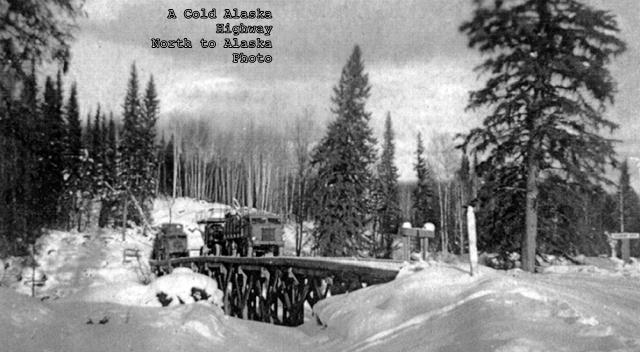
Subarctic cold should have stopped the men building the Alaska Highway in 1942 dead in their tracks. To be sure, endless problems confronted them every step along their way and finding solutions and driving on rendered their achievement epic. But none of the endless list of obstacles—mountains, mud, muskeg, permafrost, mosquitoes and all the rest—matched the simple, stark reality of subarctic cold.
Interviewer Bridgeman got down to it. “You talked about winter. You said it was like 75 below… How did you survive in that…?”
Fish Story, Courtesy Chester’s Mom
Chester remembered that kind of cold when he drove a fuel truck into the Liard River Camp. He wound up in his sleeping bag in a Quonset hut next to a roaring barrel stove. “It was about 65 below when we arrived, the next morning it dropped to 74 below.”
Five soldiers from Watson Lake arrived in camp that morning in an Army truck. Three who rode in the cab of the truck survived, but in the bed of the truck they found their two comrades dead—frozen stiff.

Interviewer Brown. “How did you guys manage to keep your hands warm and your equipment moving and so forth?”
Chester struggled to answer. “I think the whole way we did it, we was just a bunch of kids.” The “kids” didn’t know any better; didn’t know enough to stop.
Chester remembered keeping warm on a bulldozer by pulling canvas over the hood and back over his seat. The heat from the engine would warm the operator. When the dozer slammed a snow laden tree down, the snow would cascade down onto and under the canvas where the heat melted it.
The melted snow “would get in there and would get your clothes soaking wet, clear to your skin.” No problem if the operator remained under the canvas, continuing to operate.
“But as soon as you stepped out in that 40 or 50-below zero weather, just like that, your old pants and clothes would just freeze stiff, like they’re hanging on a clothes line. It burned. It really burned.”
